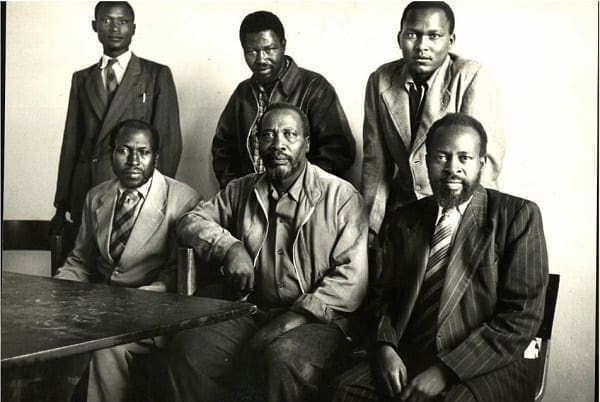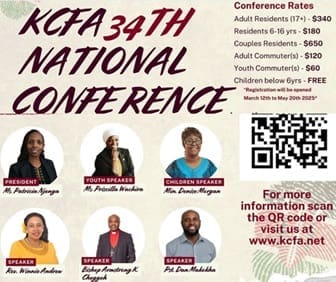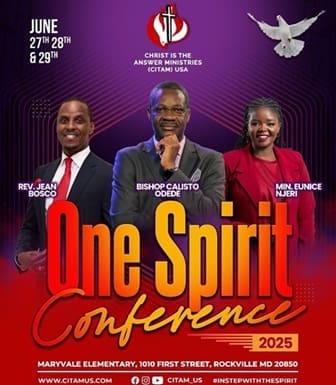
A State of Emergency was declared in Kenya on 20th October 1952, and the said “Kapenguria Six” were amongst several people rounded up and detained in what was referred to as “Operation Jock Scott” that roughly covered a 24 hour period of time from 20th to 21st October 1952.
The “Kapenguria Six” were regarded as the prime suspects in managing “Mau Mau,” and “conspiring to murder all White residents of Kenya,” and their trial, under Judge Ransley Thacker, formally began on 3rd December 1952, and concluded on 8th April 1953, with Judge Ransley Thacker finding all six men guilty, and sentencing each of them to seven years in prison with hard labour.
The dreaded “stroke of a cane” of years past? That they were spared.
All six men served their sentences, and interestingly, there has never been any mention of all six men moving to appeal the rulings made against them, because if they were subjected to a trial, then they should have equally had the right to appeal any ruling made against them, with or without a State of Emergency in place, because if citation of the State of Emergency were to be made, then there should have been no trial in the first place, and all six men should have been “detained without trial” indefinitely, or “summarily executed,” in line with State of Emergency decrees that override Common Law and/or the Constitution.
What became of the “Kapenguria Six” thereafter though, upon their release?
Elections were held in Kenya in May 1963, on the strength of which Kenya attained the status of Internal Self Government (“Madaraka”), on 1st June 1963.
Six months later on 12th December 1963, Kenya attained independence with Prime Minister Jomo Kenyatta as Head of Government and Queen Elizabeth II of Britain as Head of State.
On 12th December 1963 too, Malcolm MacDonald, the last Colonial Governor of Kenya, now became Governor-General Malcolm MacDonald of Kenya, in his new capacity as Queen Elizabeth II’s representative as Head of State in Independent Kenya.
Queen Elizabeth II of Britain and/or the sitting British Monarch, still actually retains the status of Head of State in at least five different countries of the world i.e. New Zealand, Jamaica, Canada, Fiji and Australia.
In Kenya though the Queen of Britain only served as Head of State from 12th December 1963 to 12th December 1964, upon which Kenya became the Republic of Kenya (“Jamhuri ya Kenya”), with Queen Elizabeth II of Britain now ceasing to be Kenyan Head of State.
Malcolm Macdonald also departed Kenya on 12th December 1964 upon ceasing to be Governor-General of Kenya.
Jomo Kenyatta and Malcolm MacDonald had quite a liking for each other and remained friends to the very end e.g. Malcolm MacDonald flew in from Britain to attend Jomo Kenyatta’s State funeral on 31st August 1978. MacDonald himself passed away three years later in 1981.
Jomo Kenyatta relied heavily on MacDonald to run Kenya during MacDonald’s one year tenure as Governor-General of Kenya, because Jomo Kenyatta had no experience in running Government or running a country, and MacDonald had vast experience in both, having served as a Colonial Governor in different parts of the British Empire, and having also once served as British Secretary of State for the Colonies.
So the fate of the said “Kapenguria Six” is as below:
Jomo Kenyatta was Prime Minister of Kenya from 1st June 1963 to 12th December 1964, and President of Kenya from 12th December 1964 to 22nd August 1978. Jomo Kenyatta was also the Member of Parliament for Gatundu constituency from 1963 to 1978.
Paul Ngei was the Member of Parliament for Kangundo constituency and a Cabinet Minister in both Jomo Kenyatta’s Kenya and Daniel T. arap Moi’s Kenya, and fell from grace at the 1992 general elections.
Paul Ngei’s final years were not pleasant e.g. his properties were auctioned to pay off big debts, and Ngei ended up living with one of his daughters. Paul Ngei liked women, but he was not alone e.g. Jomo Kenyatta also liked women, and the legend even goes that Jomo Kenyatta fathered a child with one of his secretaries.
Ramogi Achieng Oneko was Member of Parliament for Nakuru Town constituency and a Cabinet Minister from 1963 to 1966. Oneko was among several Members of Parliament who in 1966, defected from the then ruling party, the Kenya African National Union (KANU) to the then freshly formed opposition party, the Kenya Peoples Union (KPU), led by Oginga Odinga.
In addition to defecting, Oneko resigned his position as a Cabinet Minister i.e. Minister for Information and Broadcasting.
What followed after the defections from KANU to KPU, were by-elections, what were referred to as the “Mini-elections of 1966.”
Oneko lost his Nakuru Town constituency parliamentary seat in the “Mini-elections of 1966” and three years later in 1969, was detained alongside Oginga Odinga by President Jomo Kenyatta, following the Kisumu Riots of Saturday, 25th October 1969.
Upon his release from detention, Oneko kept a low profile until the 1992 elections, when he made a comeback by clinching the Rarieda parliamentary seat on a FORD-Kenya political party ticket.
Oneko lost at the 1997 elections, and that was the end of Oneko’s life in public service i.e. from then on until his demise, Oneko kept a low profile. Ramogi Achieng Oneko passed away in 2007, the last of the “Kapenguria Six” to pass away.
Bildad Kaggia was Member of Parliament for Kandara constituency and an Assistant Minister from 1963 to 1966, when like Oneko, Kaggia defected to KPU, and like Oneko too, lost his parliamentary seat at the “Mini-elections of 1966.”
From that point on till his demise, Kaggia never made a comeback. Kaggia did try and go into evangelism/religion by forming “Dini ya Kaggia” (“Church of Kaggia”), but “Dini ya Kaggia” was short lived.
Fred Kubai was a Member of Parliament in Jomo Kenyatta’s Kenya and lost his parliamentary seat at either the 1969 elections or the 1974 elections. Kubai made a comeback though at the 1983 elections as Member of Parliament for Naivasha constituency and as an Assistant Minister too i.e. in Daniel T. arap Moi’s Kenya, but did not retain his parliamentary seat at the 1988 elections.
From then until he passed away in 1996, Kubai kept a low profile.
Kung’u Karumba was never a Member of Parliament, a Cabinet Minister or an Assistant Minister, and instead ventured into business where he did well for himself.
Kung’u Karumba mysteriously disappeared from the scene in 1974. It is claimed that he had gone to Uganda on a business trip in 1974 during Idi Amin’s time as President of Uganda, that he was killed by Idi Amin’s henchmen after Kung’u Karumba and Amin’s henchmen disagreed on a business transaction, and that Kung’u Karumba’s body was dumped in the River Nile by Amin’s henchmen, never to be seen again.
This has been the story in circulation since 1974. President Idi Amin had a notorious and dreaded right hand man known as Isaac Maliyamungu, Col. Isaac Maliyamungu (Maliyamungu means “Property of God” in Kiswahili), and that it is Col.
Isaac Maliyamungu who allegedly personally supervised Karumba’s killing. Col. Isaac Maliyamungu briefly took refuge in Kenya, which neighbours Uganda, after President Idi Amin was deposed from power in April 1979, before Maliyamungu fled to exile in neighbouring Sudan.
Another story that has also circulated over the years is that President Jomo Kenyatta and Kung’u Karumba disagreed bitterly on matters related to money at President Jomo Kenyatta’s home in Gatundu, that both men exchanged bitter words, and that Kung’u Karumba went as far as threatening President Jomo Kenyatta as he pointed his finger at Jomo.
President Jomo Kenyatta had a trusted bodyguard called Arthur Wanyoike Thungu, Inspector of Police Arthur Wanyoike Thungu, who was implicated in the murder in 1975 of Nyandarua North Member of Parliament Josiah Mwangi Kariuki.
The allegation is that after Karumba threatened and pointed his finger at Jomo, Insp. Arthur Wanyoike Thungu, who was allegedly present during the bitter verbal exchange between Jomo and Karumba, allegedly grabbed and roughed up Karumba, in the process of which Insp. Arthur Wanyoike Thungu broke Karumba’s neck, killing him instantly, that Karumba was allegedly thereafter hurriedly buried in an unknown location, after which the Uganda claim above was generated;
By Mundia Kamau









The real freedom fighter, none of them we hear of their stories. That’s why we are at loggerhead all the time, the country is messed up with corrupt and greedy men and women. Respect and take care of real freedom fighter veteran. Have education fund for their families and generations to come. Majority don’t even have decent shelter, education and health care.